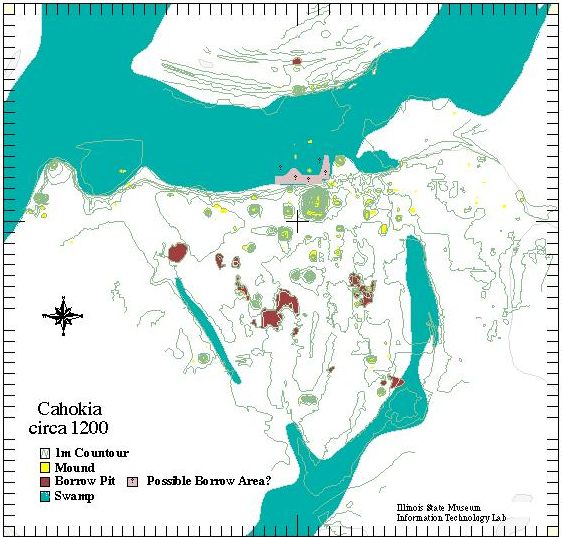One obvious question about Mississippian mounds is "Where did all this earth
come from?" Modern archaeological investigations showed that some of the basins
in Mississippian sites were actually borrow pits from which earth was excavated
for constructing Cahokia's 100 plus mounds. The suspicion has been, however,
that these pits could not possibly account for the earth represented by all of
the mounds at Cahokia. Recent analysis of mound and borrow pit volumes has
partially confirmed this suspicion (Milner and Wiant 1998). In fact the earth
from the borrow pits accounts for something less than 50% of the earth
represented by the mounds at Cahokia. Nevertheless, some borrow pits have been
filled in and leveled, rendering them unrecognizable.

Shaded map of Cahokia with borrow pits. The possible borrow pit area north of Monks Mound reflects recent work by Wiant and Schroeder that indicates some earth used in the construction of Monks Mound came from wet, swampy areas.
Reanalysis of cores taken in the mid-1980's by Wiant and M. Schroeder (1998)
reveals another interesting and potentially significant fact - an abundance of
aquatic plant remains and very dark soils. These data suggest where the
remaining dirt may have come from, the nearby sloughs and marshes. If so, the symbolism of raising earth from the
underworld to this world to reach to the upper world is intriguing.
[Previous] [Next] [Up] [Top]

